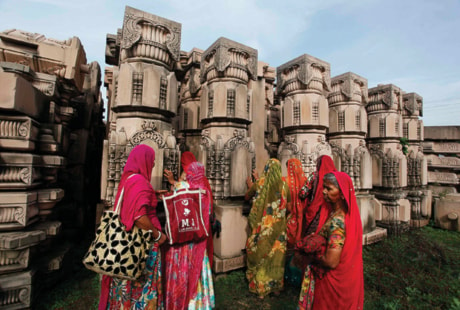AYODHYA, India — From a distance — and few are allowed to get close — the simple white tent housing the modest idol appears no more threatening than any of the thousands of other Hindu shrines in a town renowned for its temples.
But that makeshift temple, and the ruins of the demolished mosque it sits upon, stand at the centre of a religious dispute that has shaken the core of modern India and led to repeated outbreaks of Hindu-Muslim violence.
On Friday, an Indian court will finally issue its ruling in the 60-year-old case and decide whether the site should be given to the Hindu community to build a gigantic temple to the god Rama or should be returned to the Muslim community so it can rebuild the 16th-century Babri Mosque.
Though there are no signs of a repeat of the communal violence that killed 2,000 people in countrywide rioting in 1992 and nearly 1,000 more in the state of Gujarat in 2002, India is worried.
Prime Minister Manmohan Singh told journalists earlier this month that the judgment was one of his top concerns, and, in an extraordinary move, his cabinet bought half-page newspaper advertisements appealing for calm.
“Now, the way the country handles this the aftermath will have a profound impact on the evolution of our country,” Singh said.
Thousands of extra police and paramilitary troops were sent to the state of Uttar Pradesh to maintain the peace.
An umbrella group of broadcasters has asked TV stations not to inflame emotions by showing images of the 1992 destruction of the mosque by a raging Hindu mob.
Even Bollywood delayed the release of a major film that had been set to open Friday out of sensitivity for the court decision.
The site in Ayodhya, 550 kilometres east of New Delhi, has been under dispute for more than 150 years, when Hindus protested that the mosque, built in 1528 by the Mughal emperor Babur, had been erected at the birthplace of Rama.
The conflict flared in 1949 when idols of Rama appeared in the mosque. Hindus demanded permission to pray inside; Muslims protested, and by 1950 the dispute wound up in court.
While the legal case lingered, passions simmered and Hindu extremist groups and the hardline Bharatiya Janata Party seized on the issue to gain support in the 1980s.
In 1992, at the urging of Hindu leaders, tens of thousands of militants converged on the town and ripped apart the mosque with spades, crowbars and their bare hands as security forces watched.
The demolition sparked some of the worst Hindu-Muslim violence since the bloodshed that followed the partition of India and Pakistan at independence in 1947. It also called into question India’s character as a multiethnic, secular democracy.
